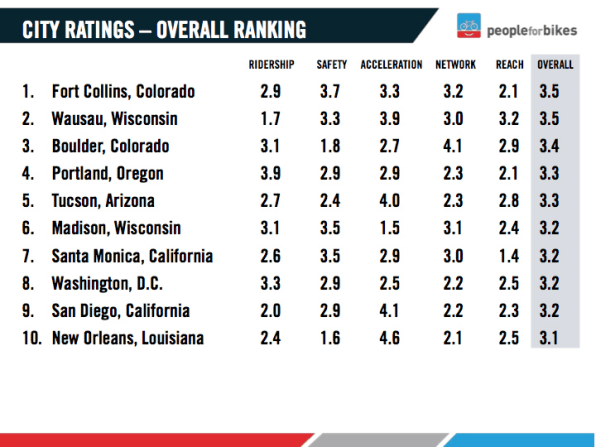Is It Bad In Garden City During Bike Week
By 2020, Fort Collins, Colorado, is aiming for one in every five trips in the city to happen on a bike. The city, which has around 185 miles of bike lanes–and uses tech-like traffic signals that cyclists can push to stop traffic–ranks among the best in the nation at making it safe and easy to run everyday errands by bicycle.
The city–which sees itself as most known for "bikes, beer, and bands"–is at the top of a comprehensive new ranking of the bike-friendliness of American communities. The nonprofit PeopleForBikes, funded by Trek Bicycles, spent two years analyzing hundreds of cities in detail, with 184 calculations per city.

"We had at our disposal this whole host of knowledge and understanding of how communities were assessing the value of transportation and the value of bicycling in their communities," says Kyle Wagenschutz, director of local innovation at PeopleForBikes. The nonprofit has been working closely with cities as they increasingly use data to improve bike infrastructure.
The ranking uses several sets of data to look at how many people are riding bikes in a city, how often they're riding ("Ridership," on the chart above), and how safe the streets are, (both in terms of crashes and perception from riders ("Safety"). It also considers how quickly the bike network is expanding ("Acceleration"), and how extensive it is–how well do the bike lanes and other improvements connect to services like offices, schools, grocery stores, and local doctors ("Network") and do they extend to all the neighborhoods ("Reach"). This last factor is critical, Wagenschultz says, because in the past, city planners have often focused new bike infrastructure in more affluent areas and neglected poorer, more diverse parts of cities.

The analysis aims to compare cities fairly; New York City, for example, hasn't necessarily ranked highly on some other lists of bike-friendly cities because of its size and the fact that so many New Yorkers commute using public transportation, despite the city's leadership over the past decade in moving to streets that give more priority to pedestrians and cyclists. On this list, among cities with populations over 200,000, New York ranks seventh.
The scores are based on a global standard, but no city–even Copenhagen, which often ranks highest in the world–would achieve a perfect five-star rating. In Copenhagen, more than 60% of residents bike daily to work or school; 9% drive. The city has invested over $150 million in bike infrastructure over the last decade, including more than a dozen bike bridges, new bicycle superhighway routes, and new technology like traffic lights that prioritize cyclists. But the city also acknowledges that it can still improve.
In this respect, Fort Collins is similar. "Fort Collins hasn't yet accomplished the same levels of success that a Copenhagen has," says Wagenschultz. "But the attitude and the perception of the city's efforts are the same–this acknowledgment that 'we've done some good things, and we've seen good results, but we still have a lot of work to do.'" The new rating system is designed to help cities quickly see both where they stand today, and where improvements can be made.
"We wanted this to be a reflection of the progress that we've made and the work still yet to be done," Wagenschultz says.
Is It Bad In Garden City During Bike Week
Source: https://www.fastcompany.com/40567218/these-are-the-best-cities-for-biking-in-the-u-s
Posted by: stanleythistried.blogspot.com

0 Response to "Is It Bad In Garden City During Bike Week"
Post a Comment